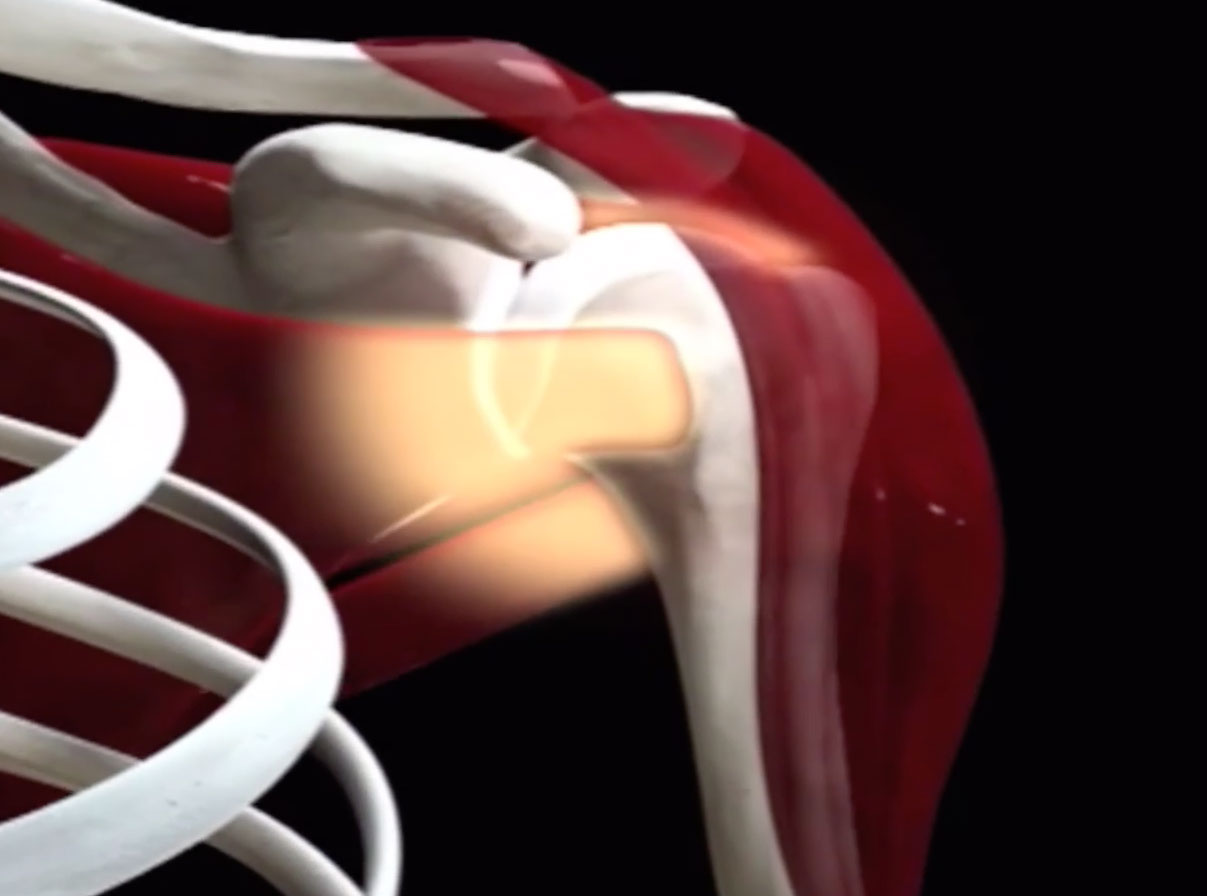The term “rotator cuff” indicates the series of tendons in the shoulder that allow the joint to make a wide range of complex movements. In fact, the shoulder is our body’s most flexible joint, able to accomplish a wider range of motion than any other.
Injury and/or degenerative disease of the rotator cuff can cause rupture, a condition known as “rotator cuff injury”.
Previously called “periarthritis”, rotator cuff injury is one of the most frequent causes of shoulder pain in adults and young people whose joint has been subject to premature aging.
The causes
Rotator cuff injuries often involve biological and mechanical factors like poor posture. Our shoulders, and especially their rotator cuff, can be described as the body part to have paid the highest price for man’s evolution from a quadruped to a biped since the cuff’s lever arm was required to work under greater stress.
Symptoms
Rupture of the rotator cuff causes a range of symptoms: pain at night, weakness of the arm, especially when moved. The shoulder joint may also be stiff with limited active range of movement. Less frequently, the joint is swollen. Pain may be localized in the anterolateral compartment of the arm along the course of the biceps and at the insertion of the deltoid.
Diagnosis
A diagnosis of rotator cuff injury will be made by the orthopedic surgeon on the basis of the patient’s history and a clinical examination backed up by diagnostic imaging techniques such as radiography, Magnetic Resonance (MRI) – carried out fairly frequently - and sometimes Computerized Tomography (CT scan).
Conservative treatment options for rotator cuff injuries
- Immobilization of the shoulder and arm in a brace may be necessary
- Intra-articular infiltrations around the tendons
- Changes in daily activities and/or occupation
- Targeted physiotherapy carried out in a specialist center by qualified professionals
Surgical treatment of rotator cuff injuries
In the past, rotator cuff repair was performed with open surgery. However, the availability of high-definition optics and increasingly precise instrumentation has done away with the need for open surgery in the case of procedures like the repair/suturing of the rotator cuff. Titanium “anchors” – where possible made of bioabsorbable material – are inserted to secure the damaged tendon to the bone. After surgery, the patient wears a brace or sling for a few weeks - usually 3 or 4, which is nature’s “biological repair period”. Immobilized by the brace, the tendon is given time to heal and become incorporated into the bone once more. After the brace is removed, the patient will follow a specific physiotherapy protocol designed to ease any pain, recover the shoulder’s range of movement and gradually allow the “shoulder ring” to once again become part of the body’s kinetic chain.


